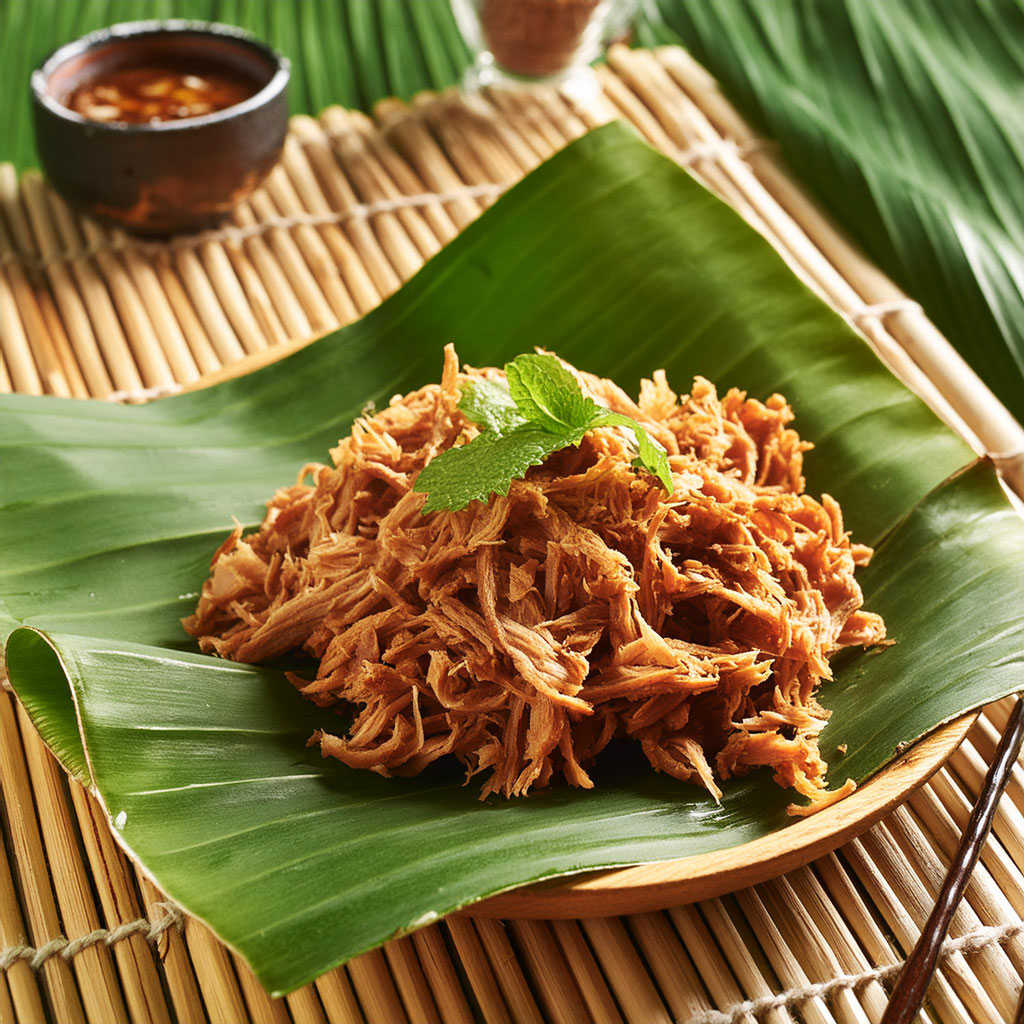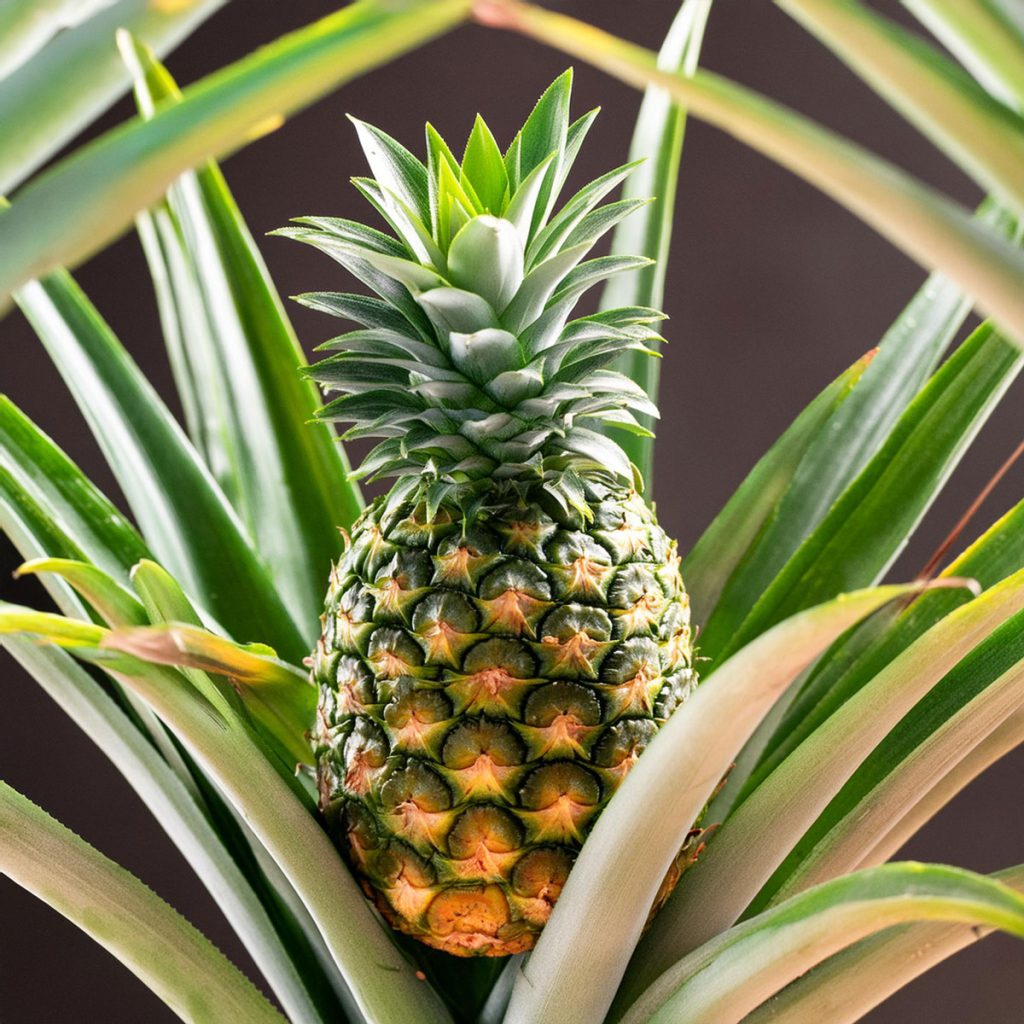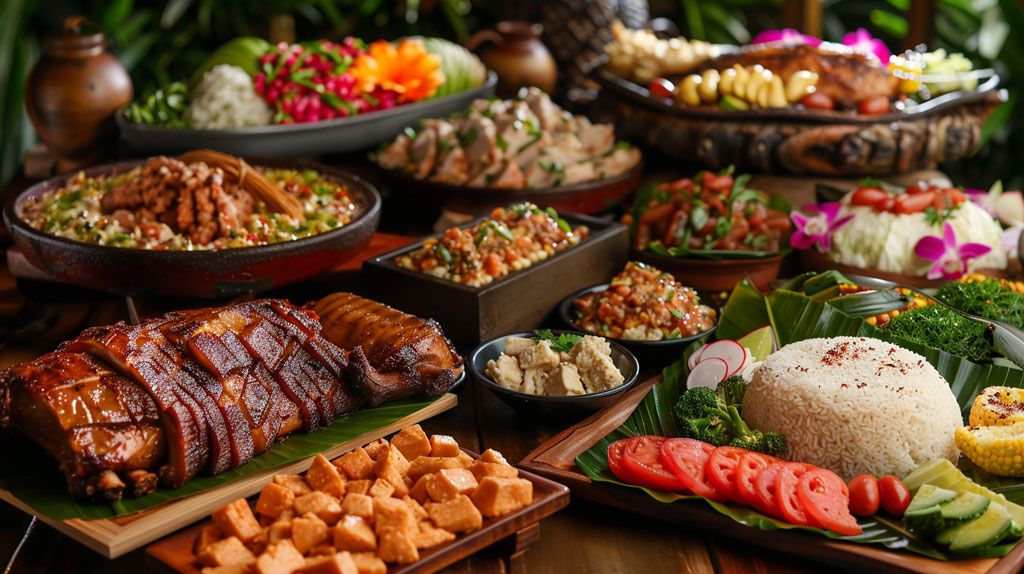Exploring the Delights of Traditional Hawaiian Cuisine
Hawaii’s traditional cuisine is a vibrant tapestry of flavors that reflect the islands’ rich cultural heritage and natural bounty. From succulent kalua pork to refreshing haupia pie, each dish tells a story of Hawaii’s history and local ingredients.
Lomi-Lomi Salmon
This dish offers a taste of Hawaii’s coastal treasures. This traditional dish combines diced salted salmon with tomatoes, onions, and sometimes chili peppers. The ingredients are gently massaged together (lomi-lomi means “massage” in Hawaiian) to blend the flavors harmoniously. The dish is both refreshing and savory, showcasing the island’s affinity for fresh seafood.
Squid Luau
Not for the faint of heart, squid luau is for all of you diehard sea food lovers out there. It is another island favorite that combines tender squid with taro leaves cooked in coconut milk. The result is a creamy, savory dish with a hint of sweetness from the coconut. It’s a comforting dish that highlights traditional Hawaiian ingredients and cooking techniques.
Kalua Pork
This is the centerpiece of Hawaiian feasts, it is prepared by slow-roasting a whole pig in an underground oven called an imu. The result is tender, smoky meat that melts in your mouth, infused with flavors of sea salt and natural juices. It’s a dish that honors ancient Hawaiian cooking methods and celebrates community gatherings.

Pork Lau Lau
A personal favorite of mine is pork lau lau. Tender pork is usually seasoned with Hawaiian sea salt and wrapped in taro & ti leaves, is steamed until it melts in your mouth. The leaves impart a unique earthy flavor to the pork, creating a dish that is both hearty and wholesome. Lau lau is often enjoyed at celebrations and family gatherings, embodying the spirit of aloha.
Ahi Poke
Poke Ahi is a traditional Hawaiian dish that features fresh, cubed pieces of raw yellowfin tuna, also known as ahi. The tuna is typically marinated in a flavorful blend of soy sauce, sesame oil, green onions, and sometimes sesame seeds or chili flakes for added spice. This dish is often served as an appetizer or a light meal, showcasing the natural taste and texture of the tuna while offering a mix of savory and umami flavors. Poke Ahi has gained popularity beyond Hawaii, becoming a favorite choice for seafood enthusiasts seeking a fresh and vibrant dining experience.
Chicken Long Rice
Chicken long rice is a traditional dish from the Pacific Islands, particularly popular in Hawaiian cuisine. It typically consists of tender pieces of chicken simmered in a savory broth with long rice noodles, which are thin and transparent, resembling bean thread noodles. The dish is seasoned with garlic, ginger, soy sauce, and often includes vegetables such as carrots, celery, and mushrooms. Long rice chicken is known for its light and comforting flavors, with the noodles soaking up the delicious broth and complementing the tender chicken. It’s a hearty and satisfying meal that reflects the diverse culinary influences found in Pacific Island cuisine.
Poi
Many will give this mixed reviews given it doesn’t look appetizing. Poi is a staple of the Hawaiian diet made from taro root. The root is cooked and pounded to create a thick, purple paste with a texture similar to pudding. Poi can vary in consistency from thick to thin and has a mildly sweet and nutty flavor. It’s often served as a side dish or used as a dip. When you taste Poi, you may notice a very mild earthy root flavor. I personally love to dip my kalua pork in it or even mix it in with my kalua pork. Try it! You might become a fan.
Haupia (Coconut Pudding)
Haupia is a traditional Hawaiian coconut pudding that serves as a sweet ending to a meal. Made from coconut milk, sugar, and sometimes thickened with arrowroot or cornstarch, haupia has a smooth texture and a delicate coconut flavor. It’s often cut into small squares and served chilled, making it a refreshing treat on a warm Hawaiian day.
Pineapple
Many believe pineapple is native to Hawaii and that it grows on trees. When I have friends visit the islands, they are completely surprised to see that the pineapple plant sprouts like a flower from a small ground plant that has long, thick, spiky leaves. Fully grown, the plant only reaches 2′-4′ in diameter. Native to South America and the Caribbean, many theorize that this delcious fruit was introduced to Hawaii during the 19th century. One of the main theories being that Christopher Columbus brought it back to Europe after visiting the Caribbean and as Europeans started colonizing the islands, indigenous Hawaiians adopted it. Now, Pineapple is a symbol of hospitality in Hawaii. It is enjoyed fresh or incorporated into dishes such as salads, desserts, and even savory dishes like grilled pineapple skewers. Its sweet, tangy flavor adds a tropical touch to any meal and showcases Hawaii’s abundant fruit harvests.

In conclusion, traditional Hawaiian cuisine is a fusion of cultural influences and natural abundance, offering a culinary journey that delights the senses and celebrates the spirit of aloha. Each dish tells a story of Hawaii’s history and the diverse flavors that have come together to create a unique and unforgettable dining experience.

